Class 7 Science Chapter 10 Assignment - Nutrition in Plants
| Table of contents |

|
| Multiple Choice Questions (MCQs) |

|
| Short Question/Answer (Q&A) |

|
| Activity-Based Questions |

|
| Research-Based Question |

|
| Guessing Game! |

|
| Crossword Puzzle |

|
Multiple Choice Questions (MCQs)
Q1: What is the process through which plants make their own food?
(a) Respiration
(b) Photosynthesis
(c) Transpiration
(d) Germination
Ans: (b) Photosynthesis
Photosynthesis is the process by which plants make their own food using sunlight, carbon dioxide, and water.
Q2: Which part of the plant absorbs carbon dioxide for photosynthesis?
(a) Roots
(b) Stomata
(c) Flowers
(d) Petals
Ans: (b) Stomata
Stomata are tiny pores present on the surface of leaves that allow the absorption of carbon dioxide for photosynthesis.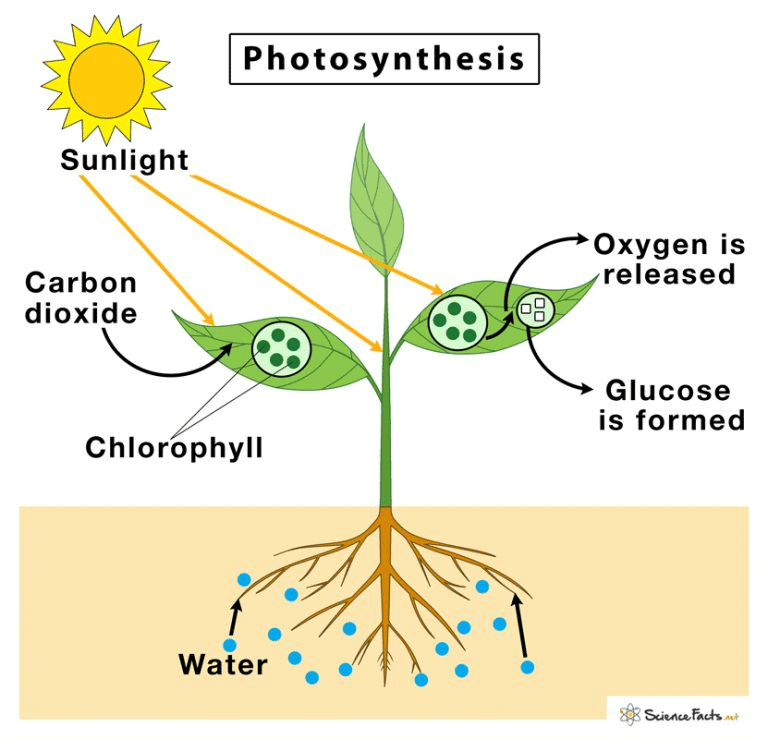
Q3: What is the main product of photosynthesis?
(a) Oxygen
(b) Glucose
(c) Nitrogen
(d) Water
Ans: (b) Glucose
The main product of photosynthesis is glucose, a carbohydrate that plants use for energy and growth.
Q4: Which of the following is an example of a parasitic plant?
(a) Rose
(b) Cuscuta
(c) Mango tree
(d) Pea plant
Ans: (b) Cuscuta
Cuscuta is a parasitic plant that derives nutrients from the host plant as it lacks chlorophyll.
Q5: What is the function of chlorophyll in plants?
(a) Absorbs water
(b) Absorbs sunlight
(c) Absorbs carbon dioxide
(d) Breaks down starch
Ans: (b) Absorbs sunlight
Chlorophyll is a green pigment that absorbs sunlight, which is used for photosynthesis in plants.
Short Question/Answer (Q&A)
Q1: What are autotrophs?
Ans: Autotrophs are organisms that can make their own food using simple substances like water, carbon dioxide, and minerals. Plants are autotrophs because they carry out photosynthesis.
Q2: Why can’t humans make their own food like plants?
Ans: Humans cannot make their own food because they lack the ability to perform photosynthesis. Instead, they depend on plants or animals for food.
Q3: What is the role of stomata in plants?
Ans: Stomata are tiny pores on the surface of leaves that allow the plant to take in carbon dioxide from the air and release oxygen during photosynthesis.
Q4: What is the importance of photosynthesis for life on Earth?
Ans: Photosynthesis is crucial because it produces food for plants and releases oxygen, which is essential for the survival of most living organisms on Earth.
Q5: How do plants obtain nitrogen for making proteins?
Ans: Plants obtain nitrogen from the soil, where certain bacteria convert atmospheric nitrogen into a usable form. Plants absorb this nitrogen to make proteins and other nutrients.
Activity-Based Questions
Q1. Perform an iodine test on the leaves of two potted plants, one kept in the dark and the other in sunlight.
Ans: Iodine test
Dark Plant: The plant kept in the dark will not show starch after the iodine test, indicating that photosynthesis did not occur due to the lack of light.
Sunlight Plant: The plant kept in sunlight will show the presence of starch after the iodine test, confirming that photosynthesis occurred, and starch was produced as a result of light energy.
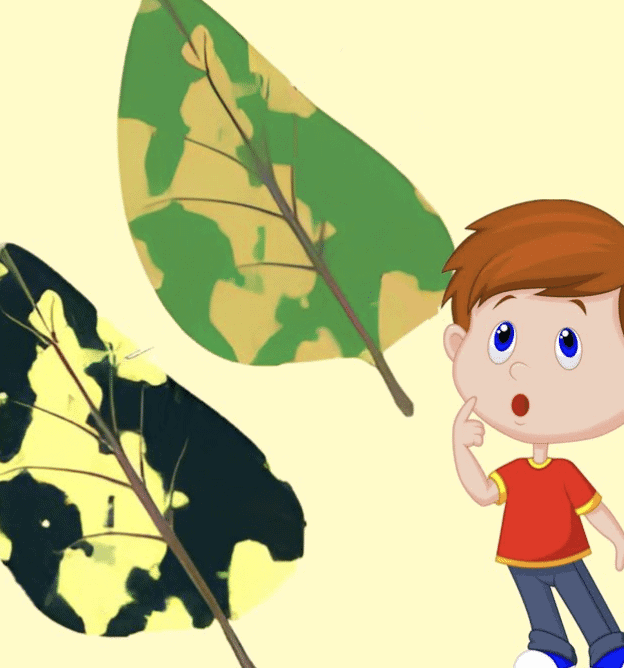
Conclusion: This experiment demonstrates that photosynthesis requires light to produce starch in plants.
Q2. Observe fungi growth on moistened bread.
Ans: Fungi growth on moistened bread:
Moist and Warm Conditions: After keeping the bread in a moist, warm environment for 2-3 days, observe the cotton-like growth of fungi on the surface.
Fungal Growth: This growth is due to fungi absorbing nutrients from the decaying bread, showing their saprotrophic mode of nutrition where they feed on decomposing organic matter.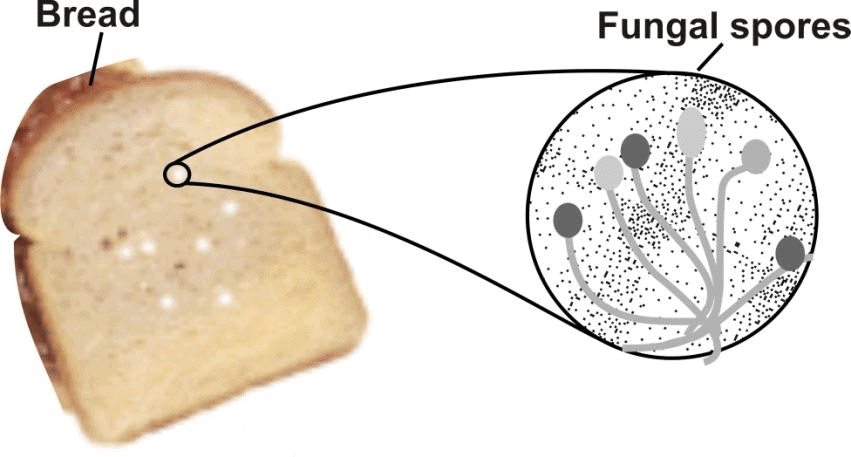
Conclusion: The experiment illustrates how fungi thrive on decaying organic material, highlighting their role in nutrient recycling in nature.
Research-Based Question
Q1. Research the different types of nutrition found in plants and how they affect plant survival.
Ans: Different types of nutrition are:
1. Autotrophic Nutrition:
Plants like green plants use photosynthesis to produce their own food. They convert sunlight, carbon dioxide, and water into glucose and oxygen.
This mode of nutrition is crucial for plant survival because it allows plants to create their own energy source, enabling them to thrive in a variety of environments.
2. Parasitic Nutrition:
Some plants, like Cuscuta (dodder), have a parasitic relationship with other plants. They attach themselves to a host plant and absorb nutrients directly from it, often harming the host plant in the process.
This mode of nutrition is beneficial in low-nutrient environments, where the plant cannot produce its own food.
3. Saprotrophic Nutrition:
Plants like fungi (mushrooms, molds) are saprotrophs. They break down dead organic matter and absorb nutrients from it.
This form of nutrition is vital for decomposing organic material, recycling nutrients, and helping plants survive in environments where organic matter is abundant.
Conclusion: These different types of nutrition allow plants to adapt and survive in various environments by obtaining nutrients in diverse ways, whether through self-production, parasitism, or decomposition.
Guessing Game!
Instructions: I will describe something related to plant nutrition, and you need to guess what it is! Let's see how many you can get right!
1. I am the process that happens in a plant's leaves, where sunlight is used to create food, and oxygen is released. I am crucial for the plant’s survival and growth. What am I?
Ans: Photosynthesis
2. You can find me in the green parts of plants, and I help in absorbing sunlight. Without me, the plant wouldn't be able to perform the process that produces its food. Who am I?
Ans: Chlorophyll
3. I do not make my own food, but I attach myself to a plant and take nutrients from it. I harm my host while gaining all I need to survive. What am I?
Ans: Cuscuta (a parasitic plant)
4. I am the place in the plant where most of the food-making process happens. I am green, flat, and have a large surface area to catch sunlight. What am I?
Ans: Leaf
5. I’m not always visible, but I am always happening in the leaves of plants. I help in water movement and cooling, and I am crucial for maintaining the plant’s water balance. What am I?
Ans: Transpiration
6. I thrive on decaying organic material and play a key role in breaking down dead things. I don't make my own food from sunlight, but instead absorb nutrients from the decay around me. What am I?
Ans: Fungi
7. I am the way some plants get their food by breaking down dead and decaying matter, not through the soil. I help in recycling nutrients and keeping the environment clean. Who am I?
Ans: Saprotrophic plants (like mushrooms or fungi)
Crossword Puzzle
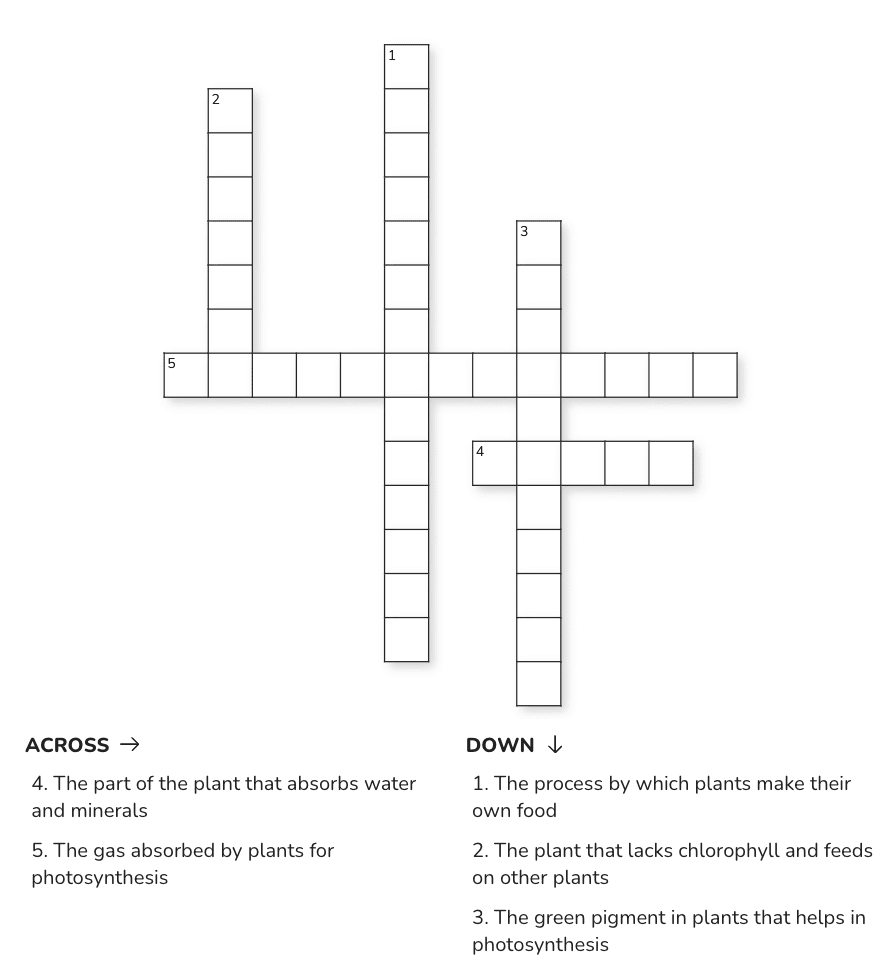
Ans:
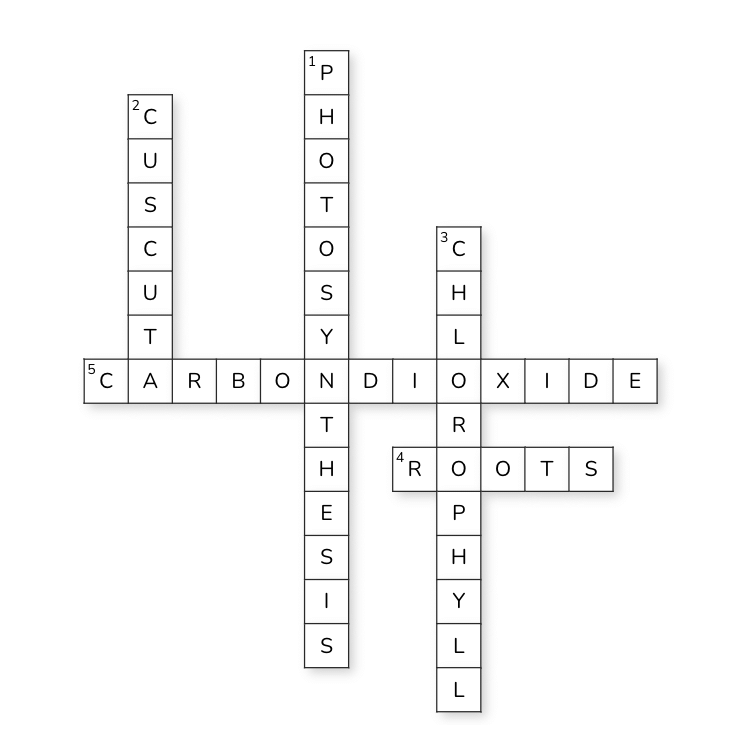
|
111 videos|435 docs|28 tests
|
FAQs on Class 7 Science Chapter 10 Assignment - Nutrition in Plants
| 1. What is the process of photosynthesis in plants? |  |
| 2. Why do plants need nutrients, and what are the main types? |  |
| 3. How do plants absorb nutrients from the soil? |  |
| 4. What role do sunlight and water play in plant nutrition? |  |
| 5. How do environmental factors affect plant nutrition? |  |















